Panasonic Lumix DMC-FS7 Review
Panasonic Lumix DMC-FS7
Panasonic’s latest ultra-compact isn’t even in the shops yet, but we’ve got a full review.
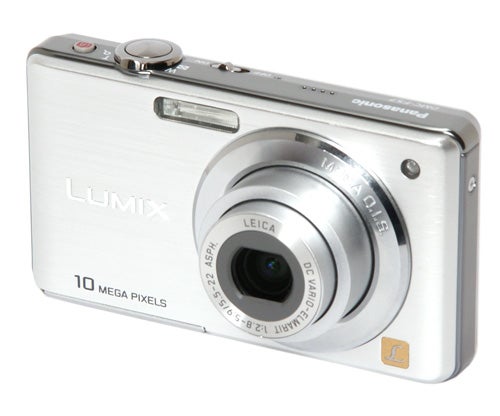
Verdict
Key Specifications
- Review Price: £169.99
It’s always nice to get an early review of a new camera, but this one’s so new it’s not even in the shops yet. The Panasonic Lumix DMC-FS7 was only announced a couple of weeks ago, but I’ve been lucky enough to receive an early review sample of this elegant new pocket compact.
Panasonic’s FS series is relatively new, having been launched about this time last year, and has just been expanded by the addition of four new models. As a series, the FS models are simpler and slightly less sophisticated than Panasonic’s premium FX models, and are designed to appeal to those looking for an easy-to-use but stylish ultra-compact. The FS7 is a mid-range model in the series, featuring a 10.0-megapixel CCD sensor, 4x optical zoom Leica lens and a 2.7-inch wide-view LCD monitor.
The FS7 has quite a lot of competition in this sector of the market, such as the excellent Canon IXUS 870 IS (£204), the equally excellent Nikon CoolPix S560 (£144), the ultra-slim Sony Cyber-shot T77 (£181) and even the Casio Exilim EX-Z200 (£165). The FS7 will be going on sale at the end of the month with a recommended retail price of £169.99, although some online retailers will undoubtedly be selling it for less.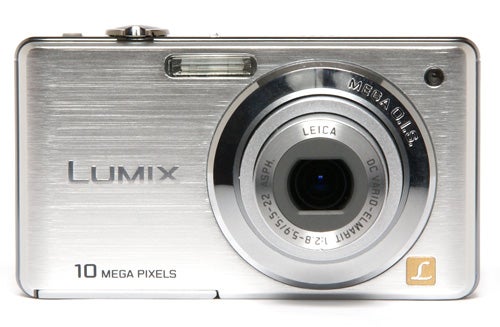
Despite that very reasonable price, no corners seem to have been cut in either design or manufacture. The FS7 has a strong all-metal body finished in an attractive brushed texture, and is available in black, bright pink or the plain silver shown here. It is a very small and lightweight camera, comfortably into ultra-compact territory. It measures 97 x 54.4 x 21.7 mm and weighs just 139g including battery and SD card. You could slip it into a shirt pocket and barely know you’re carrying it.
The body design follows the usual styling cues of the Lumix range, with rounded corners, chrome details and a vaguely art-deco classic look. The control layout is simple and traditional, and although the buttons are quite small they are clearly labelled and operate with a nice positive click. The top plate carries a rotary bezel zoom control and slider power switch, as well as a dedicated button to activate the Intelligent Auto mode. The back panel has a normal five-button D-pad, buttons for mode selection, display and the quick menu, as well as a slider switch for shooting and playback mode. There is a small textured area to serve as a thumb grip, and despite its small size the camera handles well and feels comfortable and secure in the hand. The zoom control is especially nice, with a very responsive slow-start progressive action that makes it easy to precisely frame shots.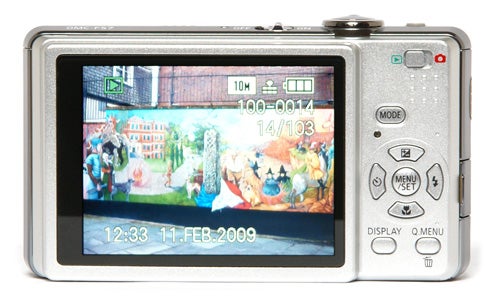
Although the FS7 is a very simple camera to use, it isn’t short on useful features. It has Panasonic’s excellent optical image stabilisation system, which produces reliably shake-free shots at 1/25th of a second. The 2.7-inch LCD monitor has a resolution of 230k dots, and has a very wide viewing angle. It also has automatic brightness adjustment, and although it does have a highly reflective surface it is quite easy to see even in bright sunlight.
One thing that differentiates the FS7 from Panasonic’s more up-market models is the lens. It has 4x optical zoom and bears the Leica brand name, but while many of Panasonic’s other compacts have ultra-wide-angle settings, the FS7 has a more prosaic zoom range equivalent to 33-132mm. This isn’t a bad thing, since it’s still a very useful range, but if you’re looking for a new camera with 25mm ultra-wide angle you’ll have to wait for the new FX40.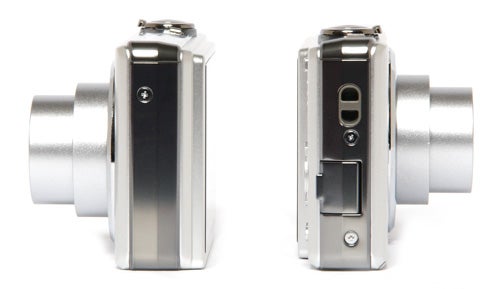
The FS7 has two menu systems, a quick menu that allows rapid adjustment of commonly-used shooting settings such as drive mode, AF mode, white balance, ISO and picture quality, as well as image stabilisation mode and LCD viewing mode. These are duplicated in the main menu, along with a brief list of other options including colour mode and digital zoom. As usual the menus are clear and easy to read, and the controls are quick and responsive.
The FS7’s overall performance is good, although not spectacularly so. It starts up in a little over two seconds, and shuts down again in about the same, which is about average for a camera in this class. Shot-to-shot time in single shot mode and maximum picture quality is two seconds, which is also about average, but in continuous shooting mode it can manage an average of 1.35 shots per second, which is pretty quick. It also has a three-shot burst mode which is faster still at 2fps.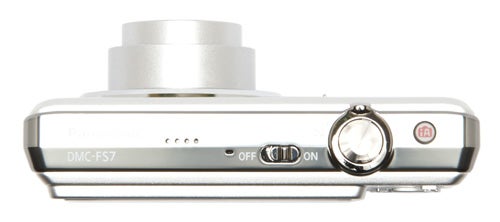
The autofocus system is very good, finding focus quickly and accurately in almost all lighting conditions. Low light performance is excellent, with a good AF assist lamp helping it to focus even in total darkness to a range of several metres. The only time it has a bit of a problem is when trying to focus in low light at maximum zoom, although to be fair most cameras have difficulty focusing under those conditions. At least the FS7 lets you know quickly if it can’t focus, and puts itself into a pan-focus mode, so even unfocused shots should be acceptably sharp.
Overall image quality is also excellent. Exposure and colour reproduction are spot on, and auto white balance is reliably accurate. The lens is superb, with excellent sharpness even in the corners of the frame, and there is virtually no distortion at any focal length. The level of detail is about average for a good 10MP camera, and the low compression at the higher image quality setting preserves it well, with no artefacts. Average file size is around 4.5MB, and a 1GB memory card provides enough space for approximately 200 shots.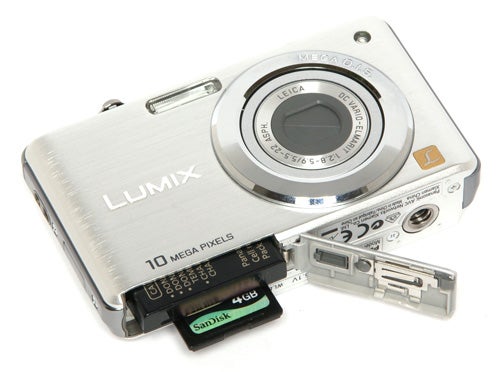
I’ve seen a couple of previews of this camera which complained about image noise at higher ISO settings, but I can only surmise that these must have been based on a pre-production sample, because I found no such problem. On the contrary, the FS7 has outstanding noise control, producing extremely high quality results up to 800 ISO. At 1600 ISO there is some loss of detail due to noise reduction, but exposure and colour balance remain accurate at all ISO settings.
”’Verdict”’
Panasonic has a well-earned reputation for making very good but very expensive high-performance compacts, but with the FS7 it has proven that it can bring the same level of quality to the mid-price market. It offers superb build quality, stylish and ergonomic design, ease of use and acceptably quick performance, combined with excellent image quality. If you are looking for a sub-£200 ultra-compact, then the Panasonic Lumix DMC-FS7 should be near the top of your shortlist.
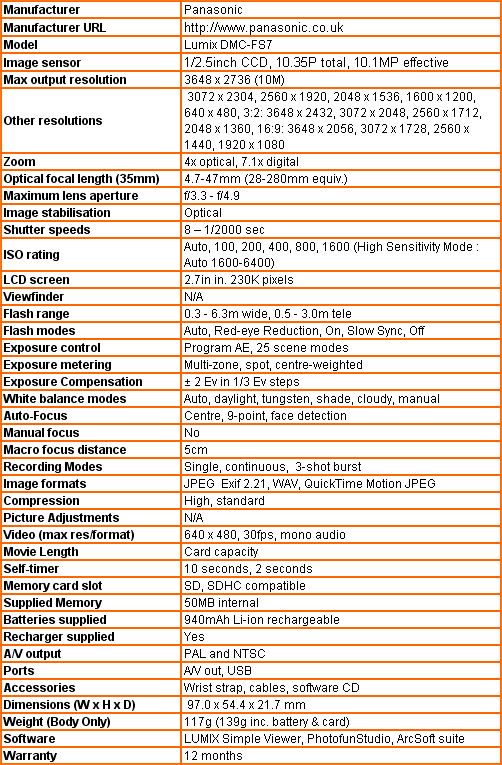
”Over the next few pages we show a range of test shots. On this page the full size image at the minimum and maximum ISO settings have been reduced to let you see the full image, and a series of full resolution crops have taken from original images at a range of ISO settings to show the overall image quality. These ISO test images are shot indoors using reflected natural light for maximum consistency. ”
—-
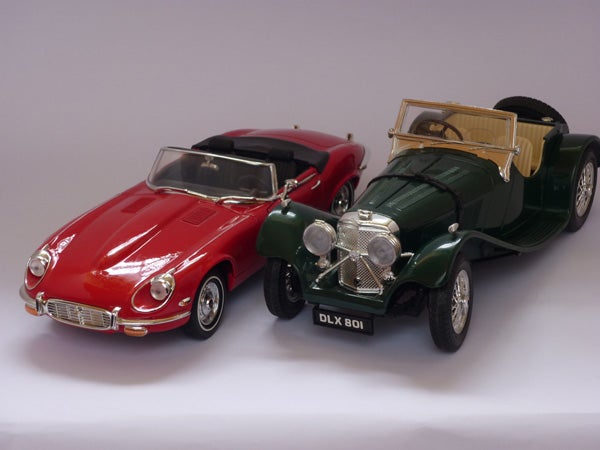
This is the full frame at 80 ISO.
—-
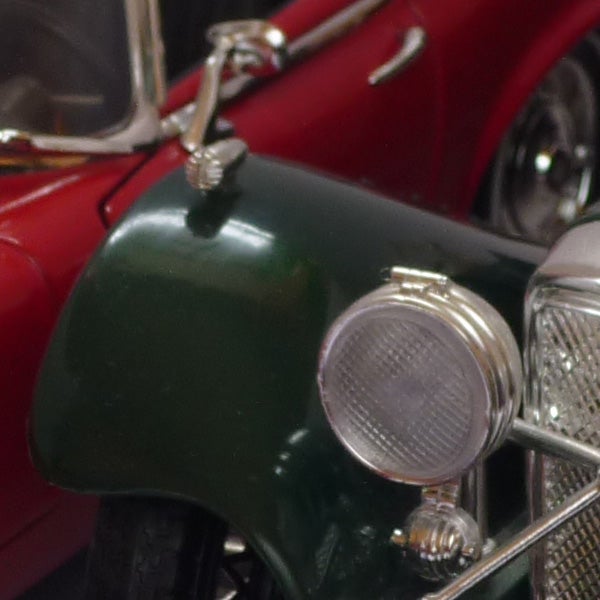
The image quality at 80 ISO is very good, with nice smooth tones.
—-
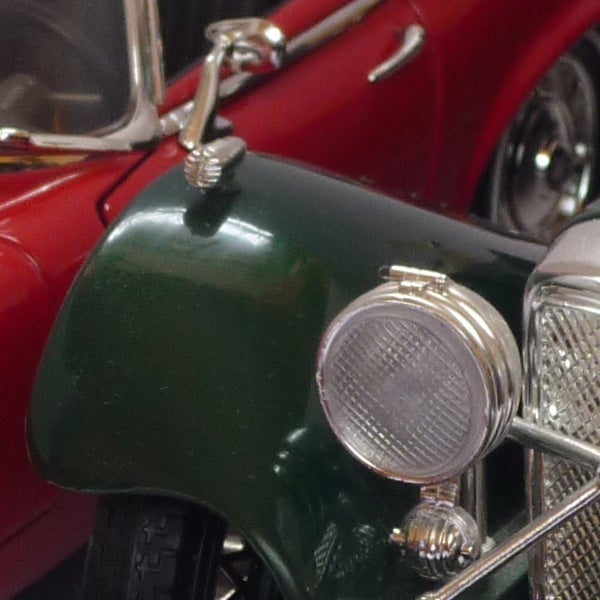
Still no problems at 100 ISO
—-
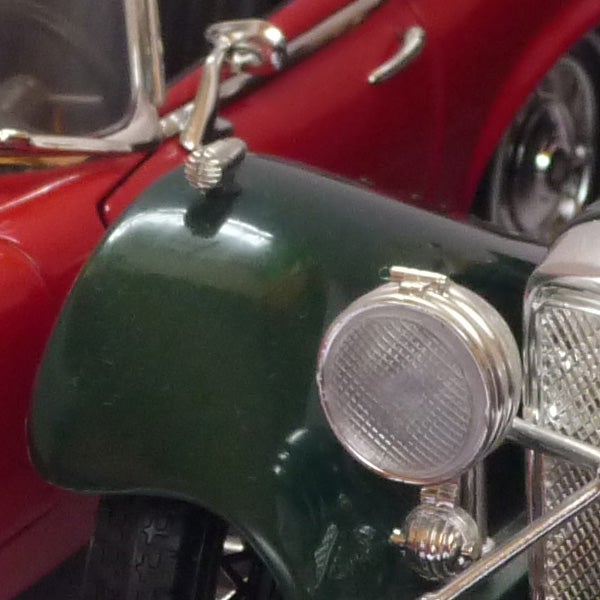
Colours are still smooth and details sharp at 200 ISO
—-
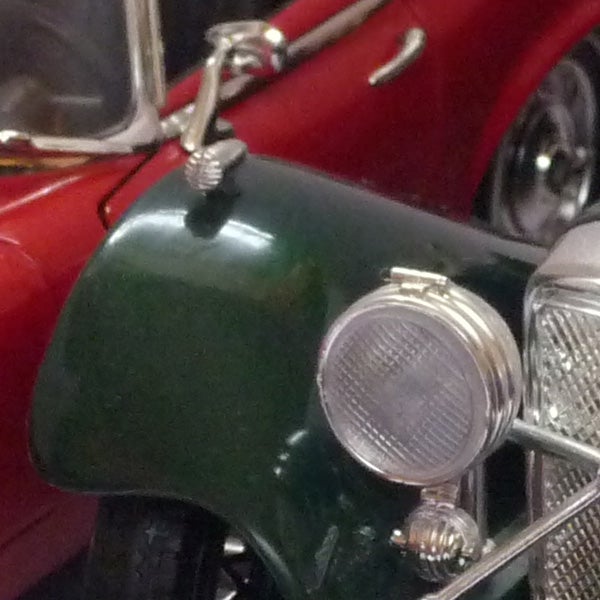
There is some noise at 400 ISO, but overall colour balance remians good and there is plenty of fine detail.
—-
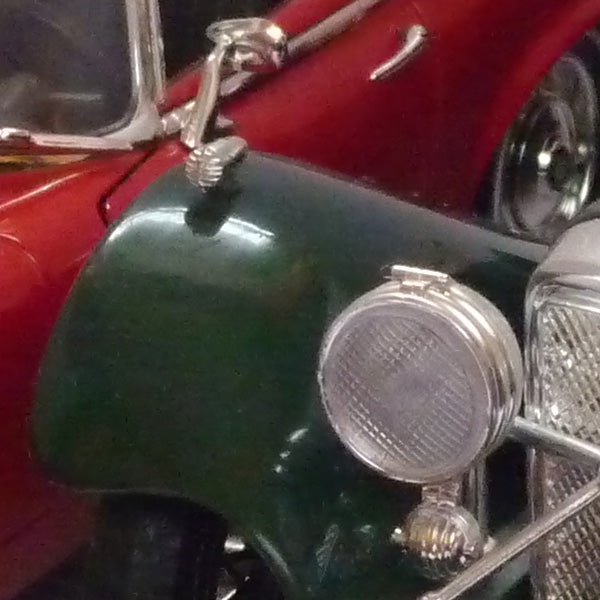
Noise reduction is starting to take its toll at 800 ISO, but the picture is still quite usable.
—-
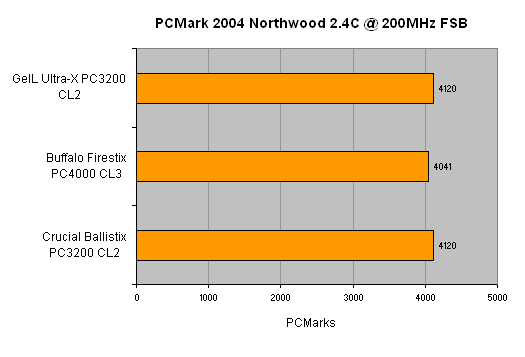
At 1600 ISO the noise reduction has blurred a lot of fine detail, but overall colour and exposure are still good.
—-
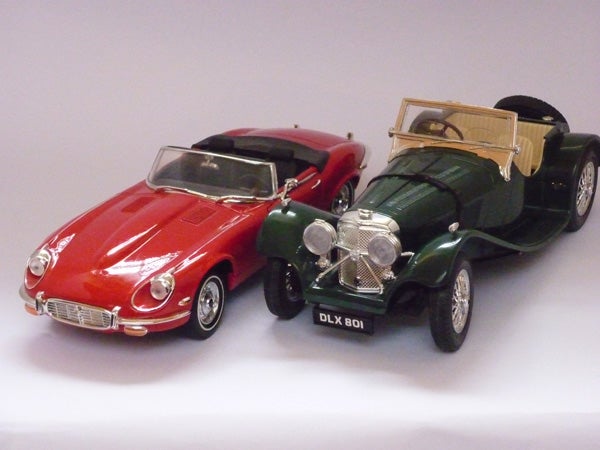
This is the full frame at 1600 ISO.
—-
”A range of general test shots are shown over the next two pages. In some cases, the full size image has been reduced for bandwidth purposes, and a crop taken from the original full resolution image has been placed below it to show the overall image quality. Some other pictures may be clicked to view the original full-size image. ”
—-
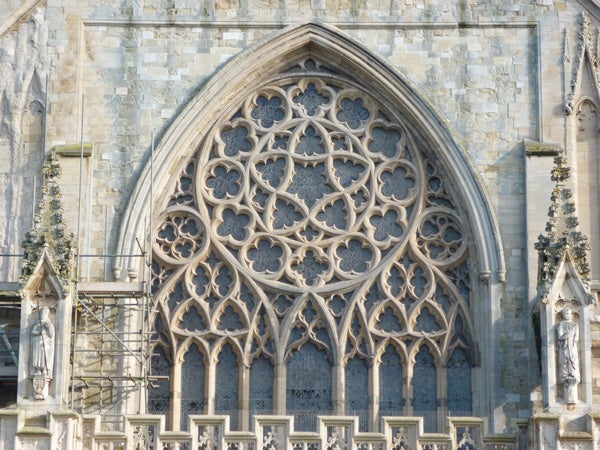
Here’s the usual detail test shot of the West Window of Exeter Cathedral, for you to compare with other cameras. See below for a full res crop, or click to see the whole picture.
—-
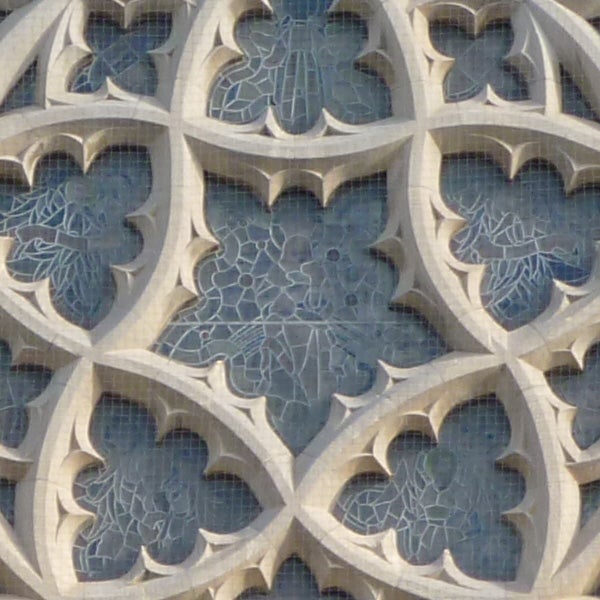
The level of detail is about average for a good 10MP compact, and the low compression keeps the image clean.
—-
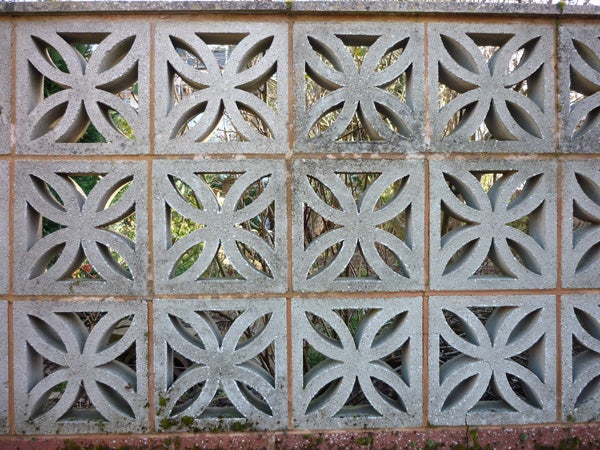
There is virtually no distortion at wide angle.
—-
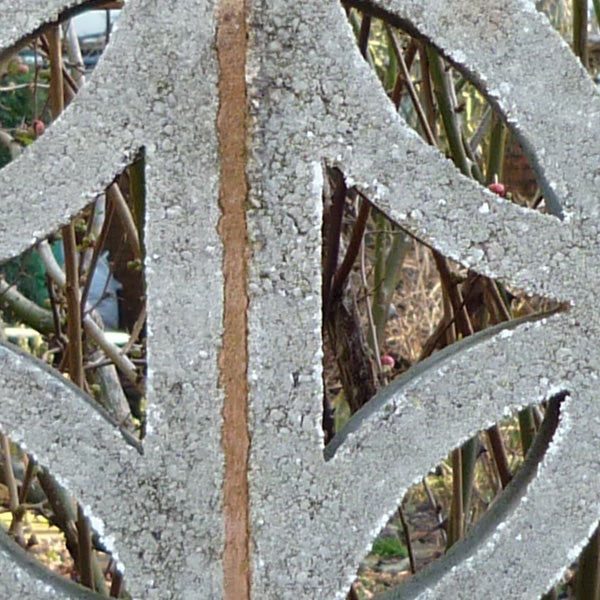
Centre sharpness is very good…
—-
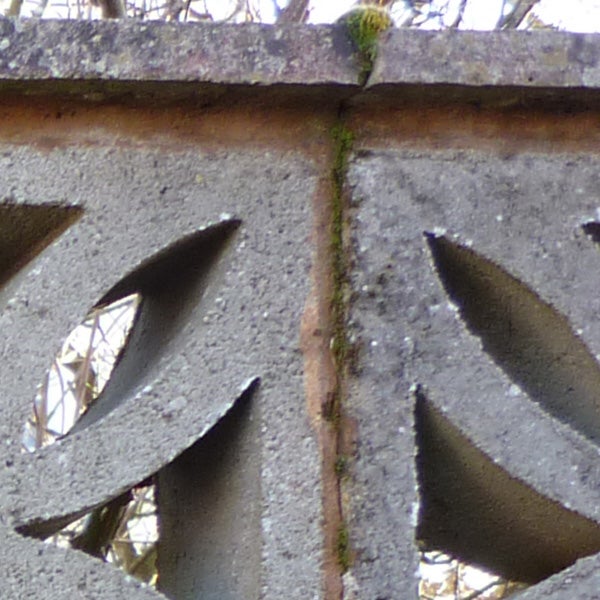
…and corner sharpness isn’t bad either. The Leica-branded lens lives up to its name.
—-
”Here are some general test shots to help evaluate the camera’s overall image quality, including the zoom range of the lens. Some pictures may be clicked to download the full size original image.”
—-
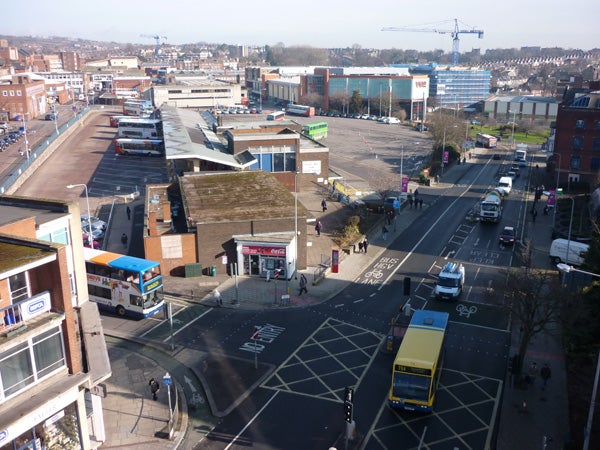
The wide-angle end of the zoom is equivalent to 33mm, ok for snapshots but not panoramas.
—-
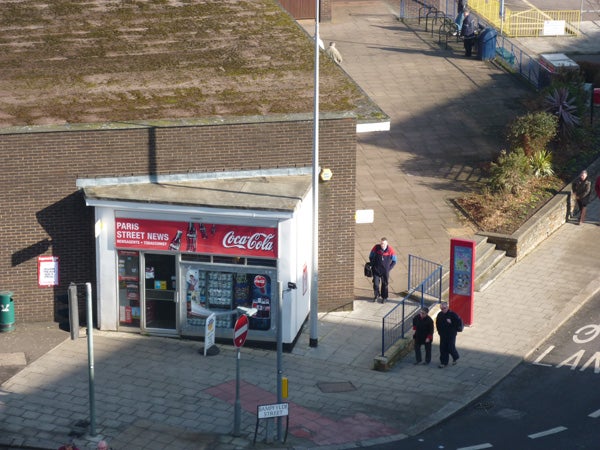
The telephoto end is equivalent to 132mm, a useful short telephoto.
—-
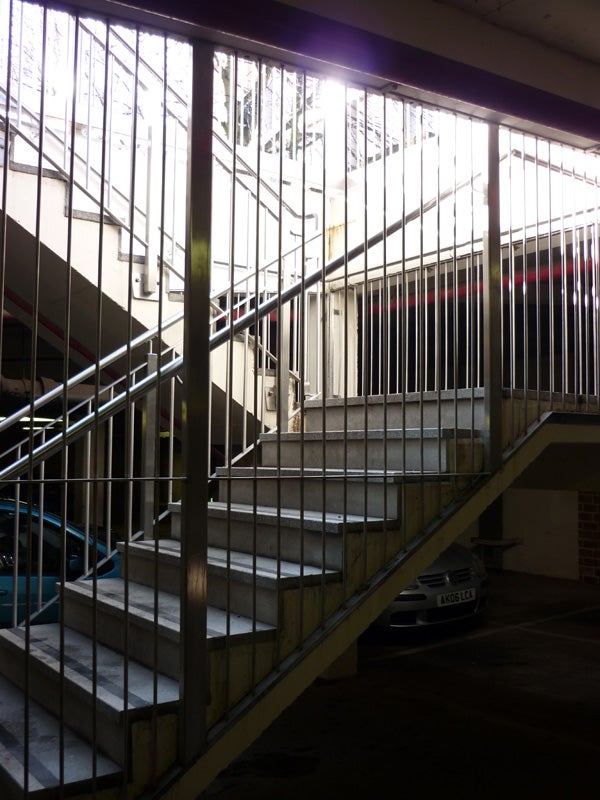
Dynamic range is about average for a 10MP camera with a small sensor.
—-
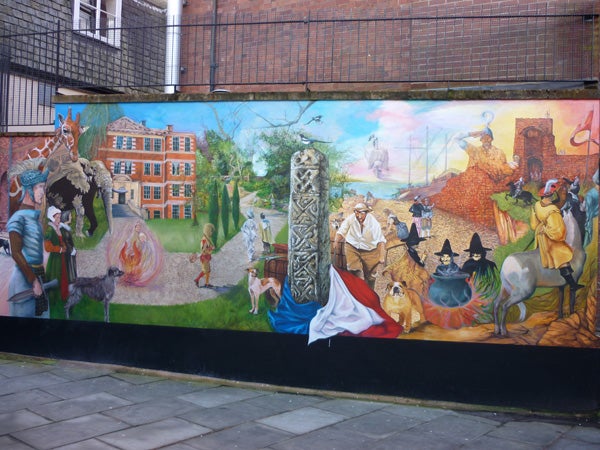
Colour reproduction is excellent. This mural has been up for a few months now, and remarkably nobody’s defaced it with graffiti it yet. Maybe the chavs are learning some art appreciation, or more likely it’s just too cold for them to venture outside.
—-
Trusted Score
Score in detail
-
Value 9
-
Image Quality 9
-
Build Quality 9
Features
| Camera type | Ultra Compact |
| Megapixels (Megapixel) | 10 Megapixel |
| Optical Zoom (Times) | 4x |

